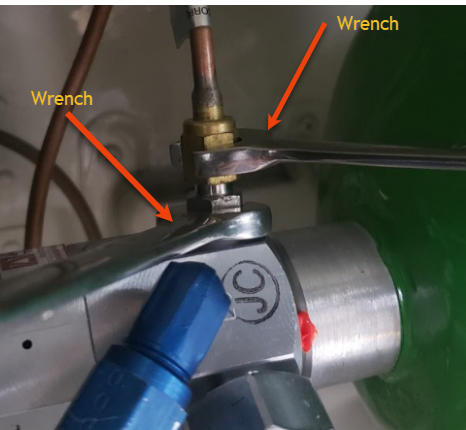Safety Reminder: Pressurized Containers
August 2019
Many aircraft operators handle, transport, or dispose of aircraft tires, compressed gas cylinders, and fire bottles. If these tasks are not completed in accordance with the maintenance manual, you are putting your life and the lives of others in danger.
Wheels
It is easy to forget that something as simple as changing a tire can result in catastrophic failure, serious injury, or even death. But a tire is a pressurized container and should not be taken lightly.
- Always deflate the tire before disassembling the wheel or removing the aircraft’s wheel assembly.
- When working with high-pressure, high-performance tires, great care is needed when removing the axle nut. They are known to explode under high pressure and maybe the only thing holding together broken tie bolts or a defective wheel.
Follow MM instructions for wheel assembly removal/installation.
Compressed Gas Cylinders
With an internal pressure up to 2,500 pounds per square inch, mishandling compressed gas cylinders can be disastrous. Make sure to:
- Always store in an upright position in a cylinder cart with a chain or strap
- Keep in a dry, ventilated place at least 20 ft. away from combustible materials
- Keep oxygen cylinders at least 20 ft. away from fuel gas cylinders
- Ensure valves are completely closed, and any protection devices are secured
 Most incidents and injuries involving gas cylinders occur during handling or transportation.
Most incidents and injuries involving gas cylinders occur during handling or transportation.
Best Practices
- Depressurize tire/wheel assemblies before removal
- Use an inflation cage after build for safety
- Don't use clip-on style air chucks
- Use a back-up wrench on fluid/air lines & fittings (see photo)
- Clean hands/tools and never mix oxygen with oil or grease
- Loudly announce intentions to everyone before turning on power or moving control surfaces
 Most incidents and injuries involving gas cylinders occur during handling or transportation.
Most incidents and injuries involving gas cylinders occur during handling or transportation.